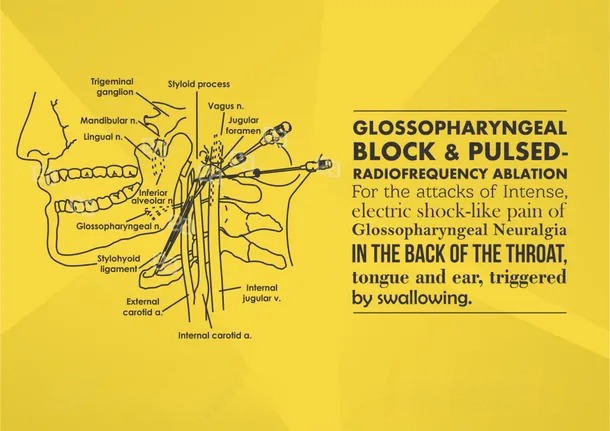

Treatments
HEAD & NECK PAIN

Glossopharyngeal Nerve Block
What is glossopharyngeal nerve?
Glossopharyngeal nerve is the ninth cranial nerve (nerves that originate directly from the brain), which supplies various structures in head and neck such as the tongue, muscles and membranes of pharynx (the part of the throat that is behind the mouth and nasal cavity), tonsils and middle ear.
Why do I need a glossopharyngeal nerve block?
Glossopharyngeal nerve block is used to treat a condition called glossopharyngeal neuralgia. Glossopharyngeal neuralgia is a disorder that is associated with repeated episodes of a sharp, jabbing pain deep in the throat, or in the tongue, ear, and tonsils, lasting a few seconds to a few minutes. Swallowing, speaking, laughing, chewing, or coughing usually triggers the pain. Glossopharyngeal nerve block is also used in palliation of pain from certain head and neck cancers.
How do I prepare myself for glossopharyngeal nerve block?
It is relatively painless, as local anaesthesia will be used during the procedure. At Atlas Pain Care, the procedure will typically take around 30 minutes and will normally be done under X-ray guidance. A tiny needle is guided from the side of your face to reach the nerve. An anaesthetist will be on standby to look after your safety during the procedure. This block is used for diagnostic and therapeutic purpose. When the pain relief is good, a pulsed radiofrequency lesion of the nerve could be performed to provide long-lasting relief. Please read our FAQ section for more information.
What are the complications with glossopharyngeal nerve block?
Major complications are rare when the block is done under X-ray guidance. Most common side effects include injection site pain, weakness in swallowing and hoarseness of voice.

